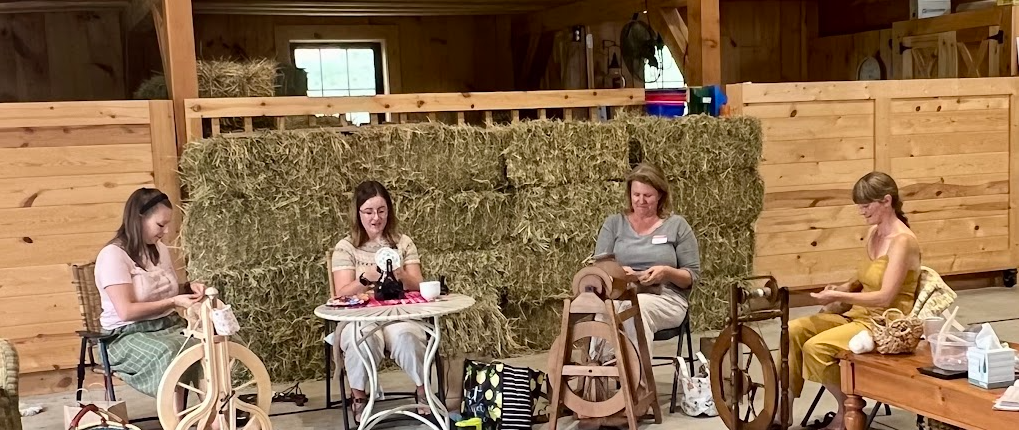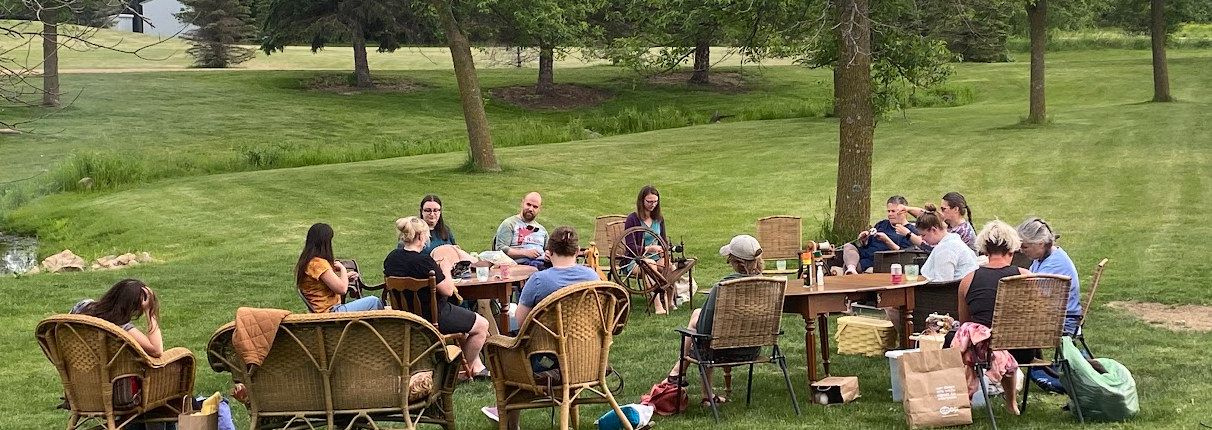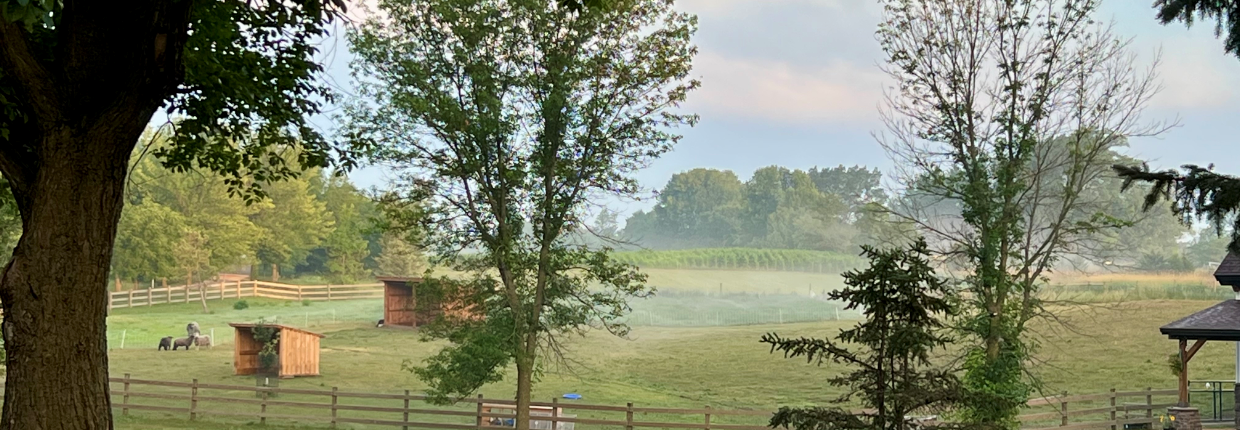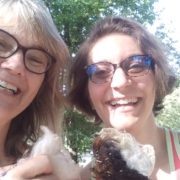Land acknowledgment
Mni Sota Makoce rests on unceded Dakota and Anishinaabe people’s land and recognizes eleven federal tribes within its borders. I am currently residing near Wakpá Tháŋka (the Mississippi River), just a few miles upriver from Bdoté, the place where the Mississippi and Minnesota Rivers join. I am joyful to be living in this land with three natural watersheds, where farming and shepherding are a piece of our robust state economy. For example, hemp has been in the recent news, not only for the oils, but also for its industrial biomass, utilized for textiles. Many of the indigenous plants in Mni Sota Makoce are fantastic for dyestuffs, bringing an entire rainbow in plant diversity that needs to be maintained and celebrated. (I am a stumbling beginner with dyeing and quality plant identification, but I am aware I am surrounded by many different resources that have great potential, including walnuts, goldenrod, cosmos, marigolds, and indigo.)
We were gifted time to think during the pandemic about the places we are from, to expand them, and to deepen the knowledge of where we currently choose to live. Many of us shut down office buildings, malls, and other nonessential places, which also encouraged restless opportunity to explore our parks, trails, bicycle paths, and wild spaces. These things also intersect with the dense number of people we have. This intersection of people and land brings me to share about skills – and how skills need change over time. The land’s needs to keep large communities healthy while living densely sometimes differ from small communities scattered widely.
Relationships
Creating place sometimes starts in a few conversations with friends. I was at a work happy hour a handful of years ago in the middle of the winter in Minnesota. Many of my colleagues are researchers, and this group was deeply engaged in a conversation about the amount of plastics in the oceans because the bar used straws for nonalcoholic beverages.
As I listened to this conversation, I pulled out my darning supplies, namely, a darning needle and some spare handspun wool of a similar color to my mittens. I tend to be rough on my mittens, including the thumb, which does the work of fumbling for my keys and getting the locks open on my apartment door. So I had split a hole in the stitches on my thumb. I started building out a set of duplicate stitches to repair the fabric. My colleagues were confused and then impressed. They shared that they tend to wear the 99-cent acrylic gloves they can get 2-for-1 at the grocery store. When they pop a hole, they throw out the gloves and grab a new pair, going through about six pairs a year.
I was surprised, given this contrast to the eco-conscious straw conversation that had been going on. I asked my colleague, “You know that acrylic is a plastic, right?”
“It is? But it’s so soft!”
“Acrylic is a byproduct of oil production and is a plastic material.”
This seemed to be a conversation killer, especially given the self-congratulatory boasts from the table about how we were saving the planet by halting our consumption of single-use straws and toting around metal versions.
“Well, if it’s just a few pair of gloves, that can’t be too bad for the environment. Nobody’s perfect. Right?”
This seems to be a common thing, doing environmental good when it is convenient, being kind when it is profitable. Here we were making a stink about straws for the turtles, which account for about 0.03% of all the plastics in the ocean, yet we don’t have the same awareness and care for the process about our hats, mittens, gloves, and boots. (What do you do with a boot when the plastic waterproof liner has cracked? Yup, most people would throw it out, but they can be repaired, re-waterproofed, and continued in use.)
Experiential building
I am a co-founder of the Spinner’s Flock with Chillon Leach, a participant at local Spin With Ewe events with Theresa Bentz and Amy Hatlevig, and a member of the Minnesota Weaver’s Guild, which hosts a spinning group. I am also a member of Chillon’s “wolf pack”: a feisty group of spinners and artists who collaborate on creating art pieces with spun wolf shed to support education and sustainable ecosystems.
We situate ourselves in our communities of shepherding, fiber creation, harvesting, transformation, sharing, and use. We also situate in a world filled with a conversation about independence and individuality, where awareness of our connectedness to one another needs intentional focus. Work can be isolating, especially remotely; cultivation of relationships takes attention, nurturing, and a bit of focus. These intersections are particularly prevalent in the fashion industry, where transportation, environmental laws, labor regulations, and other policies have become a staple part of the conversation. Where cheap materials are found, even if the conditions are harmful and exploitive, sometimes industry assumes this is the product consumers will happily settle for, assuming they are looking for something cheap.
In the context of the past few years, our fibershed’s spinners, along with everyone else, shifted the way we can think, do, inspire, and be. In the shift to Zoom calls, we temporarily lost the following:
- hugs
- potluck dinners
- squishing into a space that might have been too small for the number of spinners we had present
- hands-on coziness and crunchiness and other textures of the spins during show and share
- internet service when in the fields or when the weather was inclement
But we gained some things:
- access to evening conference calls with members in other states, as well as folks who were not able to drive due to work or living circumstances
- video chats with farmers who might not have been able to bring their sheep or alpacas to the meeting
- guest sheep, angora rabbits, dogs, and other family members
We learned quite a bit:
- Spinning in public is fun, including experimentation with in-person meetings when it was safe to do so outside, socially distanced in the parks.
- Rainstorms can disrupt or support good fiber prep, especially in the spring.
- Sunscreen and sunglasses help address the summer sunshine.
- Wool prep may be a little more complicated with the fearless sparrows who live in the park; they were more than happy to take the refuse and tuck it into their nests for the next season.
Being part of a guild or folk school is not just knowledge and classes; it’s community building and placemaking. According to the Project for Public Places, “placemaking refers to a collaborative process by which we can shape our public realm in order to maximize shared value.” Together, we build relationships and share skills that increase our ability to continue clothing one another, as well as sharing the comforts and rainbows of our lands.
Skills and organization building
In Mni Sota Makoce, the spinners in our fibershed join in community from across a wide geography of places. We have a fairly robust set of folk schools, including the Marine Mills Folk School, the North House Folk School, Duluth Folk School, and the Ely Folk School. Each of these organizations focus on the people first. I find the collective learning and sharing resources to be good sources for building our fibershed, upholding transparent historical knowledge of materials and processes. This work also includes crossing cultural and language barriers in getting people what they need, such as clothing, employment, and access to industry. Woolen mills, folk schools, and guilds are collaborative spaces for specialized knowledge, such as partnering with immigrant communities, sharing expertise and knowledge of textiles around the world, and adopting practices to fit the land and resources where we currently are.
These places of intermediary, relational work are important for celebrating the detail and expertise of our local fibershed. For example, at the 2022 Shepherds Harvest festival, a person looking to downsize their wheel collection and someone with zero budget for a wheel were able to trade and share their joy of fiber arts. Our Minnesota fibershed continues to expand, growing and revitalizing with the Three Rivers Fibershed and Norn Sisters Woolen Mill, among the dedicated shepherds both new and well-established.
Next steps
I hope you will join us for the continued relationship building and sustaining – and perhaps through quality avenues that help bridge our landmasses such as PLY!









Leave a Reply
Want to join the discussion?Feel free to contribute!